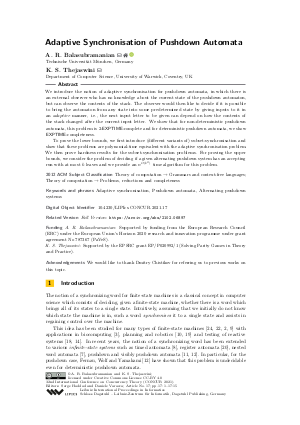LIPIcs.CONCUR.2021.17.pdf
- Filesize: 0.87 MB
- 15 pages

 Creative Commons Attribution 4.0 International license
Creative Commons Attribution 4.0 International license








Feedback for Dagstuhl Publishing